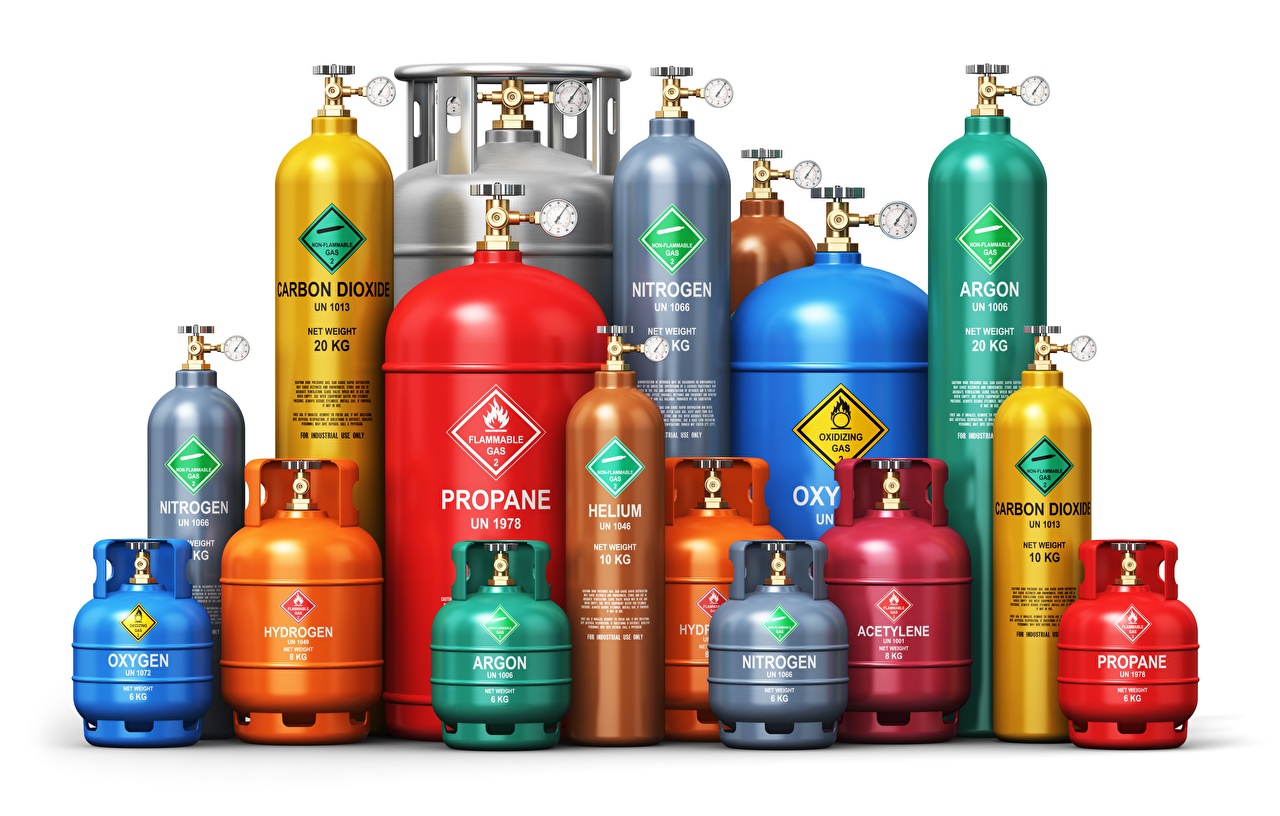- This topic is empty.
-
AuthorPosts
-
18/03/2024 at 17:32 #1748
Basic Knowledge of Gas Cylinders
1. Definition of Gas Cylinders
Gas cylinders are portable, refillable pressure vessels. Due to their unique usage, ensuring safe handling requires compliance with general pressure vessel requirements as well as specific criteria. To differentiate, cylinders with a volume not exceeding 1000 liters (commonly 35-60 liters) used for storing and transporting permanent gases, liquefied gases, dissolved gases, or adsorbed gases are referred to as gas cylinders.
2. Classification of Gas Cylinders
Seamless Gas Cylinders
Common seamless gas cylinders have a cylindrical shape, with one end having a convex, concave, or H-shaped bottom, and the other end having a necked spherical shoulder. The neck has a tapered thread for valve assembly.
Welded Gas Cylinders
Welded gas cylinders come in two-plate and three-plate structures. Two-plate structures are made by welding two long straight heads, some with a cylindrical body, and others without. Three-plate structures have a cylindrical body formed by welding cold-rolled steel plates, with elliptical heads formed by hot spinning and pressing at both ends.
Dissolved Acetylene Gas Cylinders
The external appearance of dissolved acetylene gas cylinders is similar to seamless and welded gas cylinders. However, the internal structure contains a solvent and porous filler for dissolving and dispersing acetylene.
Adsorption Gas Cylinders
Also known as solid-state high-purity hydrogen storage cylinders. Typically, hydrogen is stored in a compressed or deeply refrigerated liquefied state. Adsorption gas cylinders consist of a shell, filler (adsorbent), heat exchanger, and valve components.
3. Gas Cylinder Inspection Markings
After regular inspections at approved gas cylinder inspection stations by national boiler and pressure vessel safety supervision agencies, inspectors affix a stamp or spray a mark at designated locations on the cylinder, collectively referred to as gas cylinder inspection markings.
4. Gas Cylinder Colors and Markings
Gas cylinder colors refer to the different colors sprayed or printed on the cylinder's outer surface. Cylinder markings include lettering, color bands, and patterns (including stickers) sprayed or printed on the cylinder's outer surface.
The purpose of color markings is to quickly distinguish cylinders containing specific gases and identify the nature of the gas (flammable, toxic). This helps prevent misplacement and misuse. Additionally, it protects cylinders from rust, sunlight reflection, and heat.
From a safety perspective, while standards vary among countries, there is a commonality in color selection: red for flammable gases and yellow for toxic gases. Different colors are assigned to cylinders containing large quantities of commonly used gases or a small number of toxic gases, with consistent color-coding and identification markings (letters, color bands, or patterns) for cylinders containing the same type or category of gas.
5. Construction of Gas Cylinder Valves
The function of gas cylinder valves is to fill gas into the cylinder, seal the gas inside during storage, and release the gas during use.
To prevent cylinders from bursting due to exposure to sunlight, open flames, or other heat sources, some valves are equipped with explosion-proof outlets on the back of the side-connected nozzle. These serve as safety devices, with basic types including diaphragm, fusible plug, spring, and combinations such as diaphragm-fusible plug and spring-fusible plug.

Jiangyin Forward Supply Chain Management
info@jiangyinforward.com -
AuthorPosts
- You must be logged in to reply to this topic.


